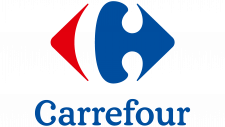Spar Logo
Spar International is a global retail conglomerate renowned for its grocery stores and supermarkets. The company thrives in diverse markets, primarily Europe, with growing footprints in Asia and Africa. Each Spar outlet, while part of a global brand, is independently owned and operated by local retailers who adhere to the company’s values and standards. This unique business model empowers local entrepreneurs while ensuring customers worldwide enjoy the same quality and value synonymous with the Spar brand. As of now, the company continues to expand its global presence, adapting to local needs and contributing significantly to the global retail landscape.
Meaning and history
Founded in 1932 in the Netherlands, SPAR began as a partnership between Adriaan van Well, a wholesaler, and a group of independent retailers. The name “SPAR” is derived from the Dutch word “sparren,” meaning “to spar or work together,” and it aptly encapsulates the company’s cooperative ethos.
Initially, the company focused on providing a cooperative platform for food retailers to thrive against the competition from chain stores. This unique business model, which leveraged collective buying power, was instrumental in the company’s rapid growth.
By the 1950s, SPAR had expanded into Belgium, becoming the first voluntary retail chain to cross national boundaries. This was the starting point for SPAR’s global expansion.
Over the years, SPAR expanded its footprint worldwide, establishing a presence in Europe, Asia, Africa, and Oceania. While the brand has remained consistent, each store has been adapted to meet the local needs and culture, ensuring relevance and success in diverse markets.
The evolution of SPAR is marked by its ability to combine global reach with local relevance. While the brand has remained a cooperative of independent retailers, it has also diversified its offerings, catering to the changing needs of consumers.
Today, SPAR is a testament to the success of its cooperative model and its ability to adapt and thrive in the global retail landscape. The company’s commitment to quality, value, and local relevance continues to be the bedrock of its success, ensuring it remains a trusted and loved brand worldwide.
1932 – 1940
When the organization was established, the initial design of its emblem was unveiled. Rather than writing out its name, the corporation opted for lettering technology to craft its letters meticulously. Central to the design was its trademark Christmas tree, which was skillfully encased within a circle. The brand’s name, “Spar”, along with its tagline, were both rendered in pristine white, set against a striking red backdrop. In creating these inscriptions, the designer opted for a bold, uppercase font, lending a sense of gravitas and prominence to the brand’s visual identity.
Over time, this logo has become synonymous with Spar’s commitment to quality and excellence. It serves as a testament to the brand’s rich history and its continuous evolution to meet the ever-changing needs of its customers. The emblem is not merely a symbol of the organization; it is a reflection of its core values and mission. The Christmas tree, in particular, is emblematic of Spar’s growth and its commitment to bringing joy and value to its customers, much like the Christmas season itself. This logo, therefore, is a crucial element of Spar’s brand identity, encapsulating its essence and its promise to its patrons.
1940 – 1950
For eight years, the initial emblem retained its unique style. By 1940, the designers decided to hone and perfect the logo’s contours. The tagline, which previously adorned the logo’s frame, was intentionally omitted. However, the company name, “De Spar”, remained unaltered, continuing to feature bold uppercase letters that commanded attention. This strategic reduction in textual content paved the way for the emblematic tree to take center stage, enhancing its size and dimension. This change wasn’t merely aesthetic; it was a calculated move to fortify the tree’s symbolic presence, ensuring it resonated more profoundly with the intended audience, symbolizing strength, growth, and stability in a more impactful manner.
This evolution of the logo was a reflection of the brand’s commitment to innovation while staying true to its roots. The tree, now more prominent and powerful, served as a visual metaphor for the company’s growth and its steadfast presence in the industry. This change also allowed for greater flexibility in branding and marketing efforts, ensuring that the logo was versatile enough to adapt to various mediums while retaining its core essence. The refined logo thus played a crucial role in solidifying the brand’s identity and fostering a stronger connection with its audience.
1950 – 1960
In 1950, the executive team at the company elected to modify its name, choosing to discard “De” from its title. This decision led to a concurrent redesign of the logo. The revamping wasn’t limited to just the truncation of the name; it also extended to the pictorial representation of the tree. This emblematic tree was reimagined using a geometric approach, characterized by straight lines, acute angles, and slightly augmented proportions. In an interesting counterbalance, the expansion of the tree’s size was offset by a corresponding amplification of the company’s name on the logo, resulting in a thicker border for the emblem’s frame. It is noteworthy that despite these changes, the color palette of the logo was kept consistent, retaining its original hues.
This transformation of the logo was a testament to the brand’s dynamic nature, showcasing its ability to evolve and adapt while maintaining its foundational elements. The geometric tree, with its enhanced dimensions, symbolized growth and progress, mirroring the company’s trajectory in the business world. The amplification of the company’s name served to fortify its brand identity, ensuring it remained a prominent and recognizable figure in the market. The unchanged color scheme, on the other hand, was a nod to the brand’s history, representing a bridge between its past and its present, and a commitment to preserving its core values while pursuing innovation and change.
1960 – 1968
In this particular phase of evolution, the designers opted for a dramatic diminution of the tree’s proportions, while inversely, the border experienced a substantial augmentation. Concurrently, the typeface of the Spar name underwent a transformation, emerging leaner with more pronounced spacing between the characters. The culmination of these modifications resulted in a logo that emanates a sense of freshness and modernity, distinguishing it from its predecessors.
These alterations were not merely cosmetic; they were a strategic maneuver to align the logo with contemporary aesthetics while preserving its symbolic essence. The diminished tree, while smaller, retained its iconic stature, symbolizing the company’s resilience and steadfastness. The expanded border represented the brand’s growth and its expansive reach. The refined font, with its increased letter spacing, conveyed a sense of openness and transparency, reflecting the brand’s commitment to honesty and customer satisfaction. The end result was a logo that not only resonated with the times but also encapsulated the core values and ethos of the Spar brand, ensuring its relevance and appeal to both existing and potential customers.
1968 – Today
The pivotal transformation in the company’s visual identity occurred in 1968, marking a significant departure from its previous designs. Up to that point, the verdant tree, comprised of a solitary triangle encased within a green border, was the prominent feature of the logo. Adjacent to this emblem, on the left side, was the company’s name, rendered in crisp white letters set against a rich red backdrop, occupying around 70% of the logo’s total dimensions. Notably, the name and the tree stood as distinct entities, each independent of the other.
This redesign was not just a visual refresh; it was a strategic move that allowed the brand to contemporize its image while staying true to its roots. The green tree, simplified to a single triangle, retained its symbolism of growth and vitality. The red background, a color often associated with energy and passion, added vibrancy to the logo. The white letters provided a clean and clear contrast, ensuring the brand’s name was easily readable and instantly recognizable. This judicious amalgamation of elements resulted in a logo that was not only aesthetically pleasing but also functioned as a powerful brand identifier, effectively communicating the essence of the Spar brand to its audience.
















